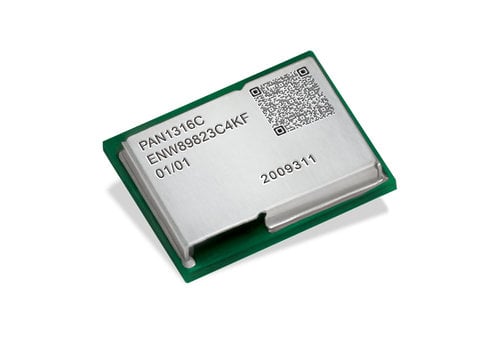www.magazine-industry-usa.com
02
'22
Written on Modified on
Proven performance - and ready for a more flexible transmission: New antenna-less PAN1316C
A modern device’s housing is supposed to fulfil several criteria at the same time: Being compact and, for instance, rugged or waterproof at the same time might lead to the undesirable consequence of radio waves hitting an impermeable housing structure.

With the new PAN1316C, Panasonic Industry has now tackled this particular issue und succeeded in offering a solution to circumvent a housing’s apparent RF unfriendliness:
The dual-mode PAN1316C, supporting Bluetooth® Low Energy and Bluetooth® Classic is ready for the connection of an external antenna via bottom pin, but – as its “sibling” - comes with all the PAN1326C2’s convincing specs as Host Controlled Interface (HCI) Bluetooth® Radio Frequency (RF) module.
“We are happy that we have been able to elimininate some developers’ headaches with the PAN1316C”, comments Tomislav Tipura from Panasonic Industry Europe, “and that this outstanding technology is now also available for applications with housings that are anything but ready for radio waves.”
With a a tiny footprint of only 58,5mm² (9 0mm × 6.5mm ×1.8mm and coming with the CC2564C, Texas Instruments™ seventh generation Bluetooth® core integrated circuit, it offers best-in-class performance - about twice the range of other Bluetooth® Low Energy solutions.
Next to the UART interface, the module contains a audio/voice codec interface which is a fully-dedicated programmable serial port that provides the logic to interface to several kinds of PCM or I2S codec’s. The wide operating temperature range is -40°C up to +85°C and the supply voltage range is 1.8V up to 4.8V.
Particularly convenient: The PAN1316C is even 100 % pin-compatible with previous generations of Texas Instruments-based Bluetooth HCI modules.
Learn more on our latest member from the Panasonic Industry module famliy on our web page.
www.panasonic.com

